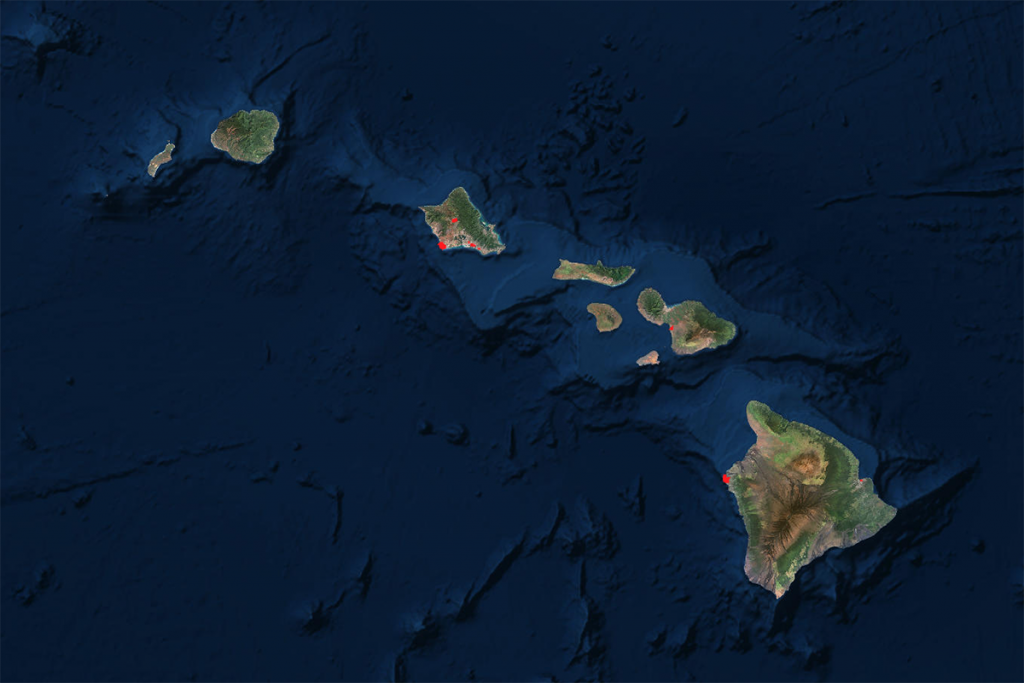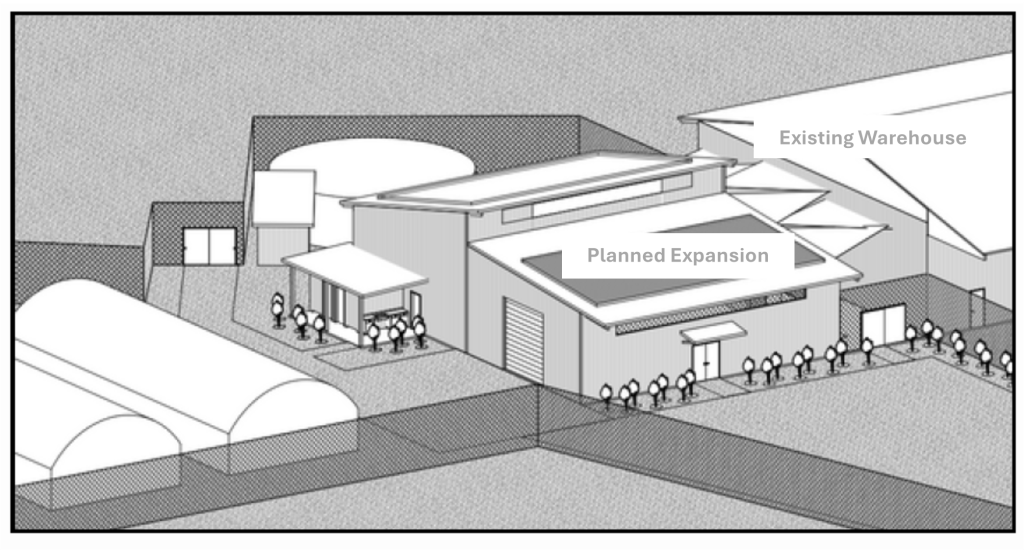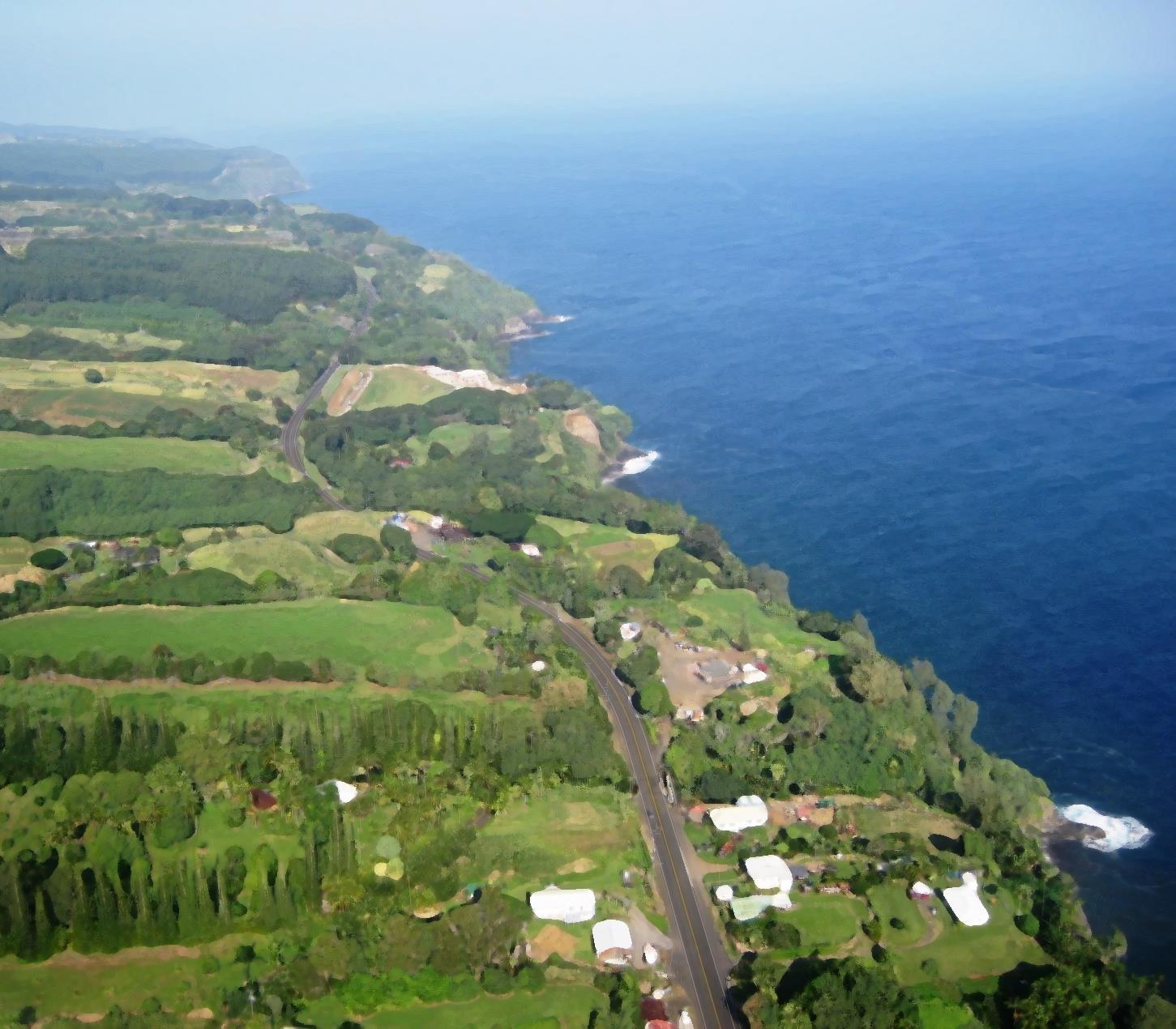FTZ9 Locations

Proposed Project: Tropical AgTech Center at Hilo Foreign-Trade Zone
State of Hawaii’s Foreign-Trade Zone No. 9 (FTZ9), a division of the Department of Business, Economic Development & Tourism, is working with Hawaii Community College, Hawaii Island Agricultural Partnership, Hamakua Institute, Kamehameha Schools, UH Indigenous Cropping Systems Laboratory, County of Hawaii and others to develop a Tropical AgTech Center in Hilo, Hawaii. The project is aligned with the state and county CEDS as outlined in “A Roadmap for Transforming Hawaii Island’s Agricultural Economy.”
The main goals of the Tropical AgTech Center are to improve the profitability of small farms in Hawaii Island, and to increase exports from Hawaii. The program would further FTZ9’s mission to increase international trade, support local companies, grow jobs, and encourage investment. The development delivers flexible office and warehouse space, and greenhouses near the Hilo airport. FTZ9 is requesting constructing funding from the federal government to build the project.
Strategic Tropical AgTech Project for Hawaii Island
This initiative leverages advancements in technology to address the multifaceted challenges of modern agriculture. By fostering collaboration among a diverse set of stakeholders, the Tropical AgTech Center aims to be a beacon of innovation for developing practical solutions that enhance agricultural productivity and resilience. The Tropical AgTech Center is poised to transform Hawaiʻi’s agricultural sector into a model of efficiency, inclusivity, and sustainability, ensuring it thrives in the 21st century and beyond.

Implementation from Hawaii Community College prior to launch at Hilo FTZ
Implementation will start with the development of initial data sharing, analysis and applied learning mechanisms followed by the development of training programs and the introduction of new technologies for demonstration and testing. These initial, Phase 0 efforts will be run from an office on Hawaii Community College’s campus, enabling the project to build momentum and interest amongst Hawaii Island Ag Partnership’s members and other farmers while work on designing and expanding the Foreign-Trade Zone’s facilities next to Hilo Airport gets underway. The first phase of construction will focus on AgTech Infrastructure. Once these Phase 1 site clearing and greenhouse facilities are completed, the project will move, expand its range of analysis, training and demonstration activities. The Phase 2 warehouse expansion will allow for additional tenants, community events and incubator activities.
Role and Strategic Outcomes of Tropical AgTech Center
- Serve as a centralized point for innovation in agriculture and food technology.
- Establishment of a cutting-edge facility for agricultural innovation
- Enhanced Hawaii Island Ag Partnership (HIAP) network of stakeholders
- Facilitate the introduction and adoption of new agricultural technologies and processes. Bring in foreign technology for demonstration and testing (FTZ advantages).
- Increased adoption of innovative agricultural technologies among farmers.
- Improved farm profitability through advanced agricultural practices.
- Support the development of new agricultural careers and business opportunities.
- Development of a skilled workforce in modern agricultural techniques
- Emergence of new business opportunities within the agricultural sector
- Enhance data collection, analysis, and dissemination on market trends and opportunities.
- Improved market intelligence for Hawaii’s agricultural sector.
- Enhanced decision-making capabilities for agricultural producers based on real-time data.
- Strengthen the agricultural value chain on Hawaii Island through optimized practices and technologies.
- Increased efficiency and sustainability of the agricultural value chain through enhanced collaboration and alignment among value chain participants.
Expected Tropical AgTech Center Activities
- Develop initial data sharing, analysis, and applied learning mechanisms.
- Design and expand the Foreign Trade Zone’s facilities next to Hilo Airport for the hub.
- Convene members, strategies, and arrange facilitation and recordkeeping of collaborative efforts through HIAP
- Introduction of new and foreign technologies for demonstration and testing at the hub.
- Coordinate training programs by Hawaii Community College to facilitate the adoption of new processes.
- Outreach to farmers to demonstrate the benefits and practical applications of new technologies.
- Skills training and in-service training for agricultural advisers and service providers, utilizing new data and technologies.
- Convene coalition of research partners for student participation and support from UH resources, fostering innovation and new career paths on Hawai’i Island.
- Market systems development support and value chain analysis by the Hamakua Institute to identify and foster new business opportunities.
- Collaborative data gathering from multiple stakeholders using students and industry partner associations.
- Joint analysis of data to identify market trends and opportunities, supported by AI tools and services.
- Dissemination of findings to the agricultural community through workshops, seminars, and digital platforms, ensuring data-driven decision-making.
- Develop and implement training programs focused on optimizing agricultural value chains.
- Demonstration activities at the new facilities to showcase how new technologies can enhance value chain efficiency.
- Collaborate with industry partners and associations to ensure that the hub’s activities are closely aligned with the real needs of Hawaii’s agricultural sector, leading to systemic improvements and strengthened value chain relationships.
- Rent space to stakeholders to fund operations
Development Partners and their Roles

Tropical AgTech Center Next Steps
Next steps are geared towards maximizing collaborative efforts, resource allocation, and technological advancements. This includes:
- Integrate Existing Project Activities and Resources, exploring where partners’ current projects and resources overlap with each others’ objectives, leveraging new collaboration potential.
- Secure Resources for Facility Development, identifying potential funding sources, such as grants, investments, and partnerships, and preparing detailed proposals to obtain financial support.
- Engage and Communicate with Partners, organizing outreach to build awareness, gather feedback, and align activities with the collective vision and goals.
- Consolidate and Expand Agricultural System Data, building on existing datasets and expanding them to include more comprehensive data, enhancing analyses and facilitating better decision-making.
- Identify useful AI data management and analytical tools that can improve system efficiency, provide insightful analyses, support evidence-based advocacy and foster technological advancements in agricultural practices.



